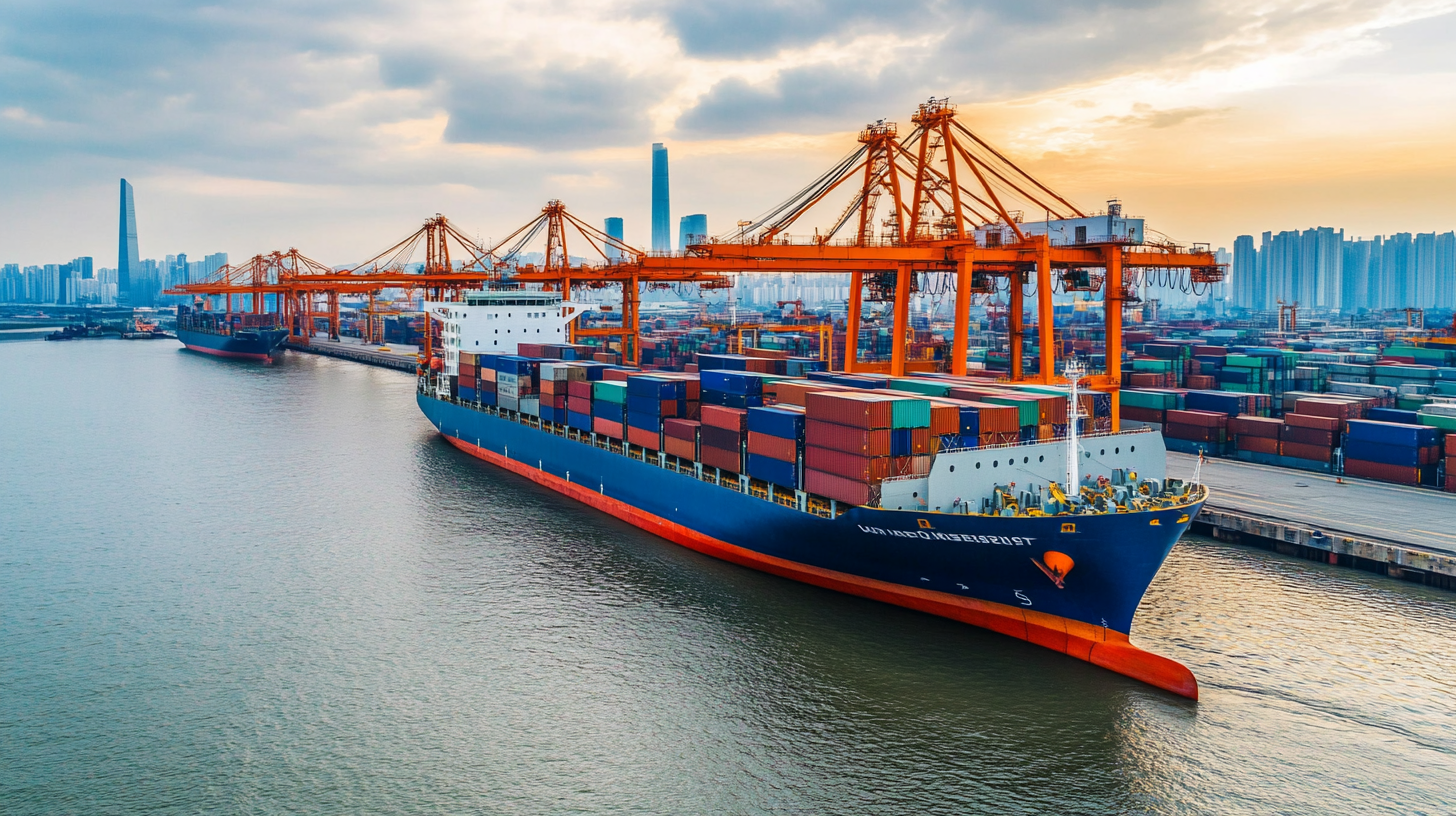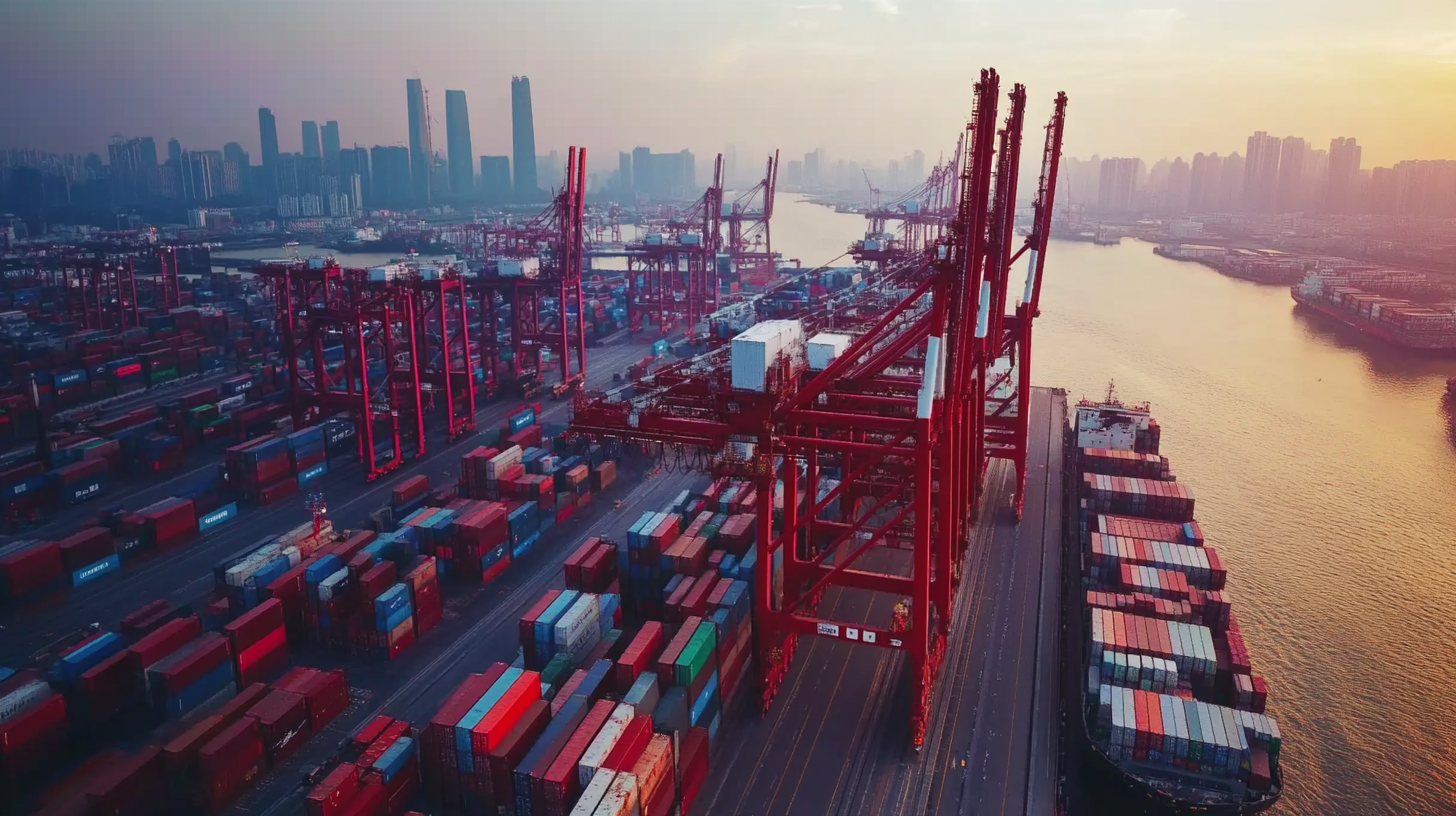Unleashing Excellence in Manufacturing from China for Global Supply Chain Success
 In today's interconnected world, the significance of a robust global supply chain cannot be overstated, and
China stands at the forefront of this dynamic landscape.
As a manufacturing powerhouse, China offers unparalleled capabilities and resources that can drive excellence across various sectors.
However, leveraging these advantages requires a thorough understanding of the intricacies involved in importing from this vast nation.
This blog aims to provide a comprehensive checklist tailored for
businesses looking to harness China's manufacturing potential. By focusing on key factors such as
quality control, supplier relationships, regulations, and logistics,
organizations can ensure a seamless integration of Chinese manufacturing into their supply chain strategies.
As we delve into this checklist, we will explore practical steps that companies can take to not only tap into the immense potential
that China offers but also to enhance their overall supply chain success.
In today's interconnected world, the significance of a robust global supply chain cannot be overstated, and
China stands at the forefront of this dynamic landscape.
As a manufacturing powerhouse, China offers unparalleled capabilities and resources that can drive excellence across various sectors.
However, leveraging these advantages requires a thorough understanding of the intricacies involved in importing from this vast nation.
This blog aims to provide a comprehensive checklist tailored for
businesses looking to harness China's manufacturing potential. By focusing on key factors such as
quality control, supplier relationships, regulations, and logistics,
organizations can ensure a seamless integration of Chinese manufacturing into their supply chain strategies.
As we delve into this checklist, we will explore practical steps that companies can take to not only tap into the immense potential
that China offers but also to enhance their overall supply chain success.
Enhancing After-Sales Services: The Key to Competitive Advantage in China’s Manufacturing Sector
Enhancing after-sales services has emerged as a crucial strategy for manufacturers in China aiming to secure a competitive edge in the global market. With the shifting perception of Chinese brands, which have increasingly shed their "cheap knockoff" stigma, providing exceptional after-sales support can significantly bolster brand loyalty and customer satisfaction. In an industry where competition is fierce, investing in after-sales services not only helps retain existing customers but also attracts new ones who prioritize long-term value over short-term savings.
Tips for enhancing after-sales services include implementing robust customer feedback systems to understand needs and pain points. Engaging with customers post-purchase allows manufacturers to swiftly address issues and adapt offerings accordingly. Additionally, providing comprehensive training for service personnel ensures consistency in service delivery, fostering trust and reliability. Expanding communication channels—such as online chat support or mobile apps—can further streamline the after-sales experience, making it easier for customers to seek assistance.
Moreover, leveraging technology can create a more efficient after-sales process. Utilizing data analytics helps track customer behavior and predicts potential service needs, enabling proactive support. Manufacturers that can effectively harness these strategies will not only thrive in China’s evolving manufacturing landscape but also set the standard for excellence in the global supply chain.
Unleashing Excellence in Manufacturing from China for Global Supply Chain Success - Enhancing After-Sales Services: The Key to Competitive Advantage in China’s Manufacturing Sector
| Dimension | Description | Current Performance (1-10) | Improvement Potential (%) |
|---|---|---|---|
| Product Quality | Consistency and reliability of manufactured products | 7 | 15% |
| After-Sales Support | Quality and accessibility of post-purchase services | 6 | 20% |
| Supply Chain Efficiency | Time and cost effectiveness of the supply chain | 8 | 10% |
| Customer Satisfaction | Overall satisfaction of customers with products and services | 7 | 25% |
| Innovation Rate | Frequency and impact of new product developments | 5 | 30% |
Understanding Repair Costs: A Critical Factor in Supply Chain Efficiency
 Repair costs play a pivotal role in a manufacturer's cost structure, directly impacting the efficiency and effectiveness of the global supply chain. According to a report by the Global Supply Chain Institute, repair and maintenance issues can account for up to 15% of total manufacturing costs. When evaluating supply chain efficiency, it's crucial to understand that every dollar spent on repair translates to potential delays and disruptions, affecting not only production timelines but also customer satisfaction.
Repair costs play a pivotal role in a manufacturer's cost structure, directly impacting the efficiency and effectiveness of the global supply chain. According to a report by the Global Supply Chain Institute, repair and maintenance issues can account for up to 15% of total manufacturing costs. When evaluating supply chain efficiency, it's crucial to understand that every dollar spent on repair translates to potential delays and disruptions, affecting not only production timelines but also customer satisfaction.
In the context of manufacturing in China, where low labor costs attract global companies, the hidden costs of repairs can often negate these savings. A study by McKinsey suggests that poor quality management practices can increase repair costs by as much as 30% in some sectors. Thus, manufacturers must prioritize quality control measures to mitigate these expenses, ensuring that defects are minimized and repairs are less frequent. By doing so, they can enhance their competitive advantage while contributing to a more resilient and efficient supply chain that is essential for success in today's global landscape.
Leveraging Technology: Innovations Driving Excellence in Chinese Manufacturing
In the rapidly evolving landscape of global manufacturing, China is at the forefront of integrating advanced technology to enhance its production processes. Innovations such as automation, artificial intelligence, and digital transformation are reshaping Chinese manufacturing, making it more efficient and competitive on the world stage. Recent reports indicate that investments in technology have not only lowered costs but also improved the quality and sustainability of products, solidifying China's position in the global value chain.
**Tip:** To stay competitive, manufacturers should prioritize investment in digital technologies that streamline operations and reduce waste. Implementing data analytics can provide invaluable insights into production processes, leading to more informed decision-making.
Additionally, the emphasis on autonomous innovation is vital. As highlighted by industry leaders, cultivating a culture of creativity and technological advancement is essential for sustaining growth. With China's ambitious "Manufacturing 2025" initiative, the focus is on transitioning from traditional manufacturing to high-tech production, which has far-reaching implications for both domestic and international markets.
**Tip:** Companies should foster partnerships and collaborations with tech firms to leverage new technologies, ensuring that they can adapt and thrive in an increasingly competitive environment. Initiating pilot projects can also help in evaluating the effectiveness of innovative solutions before large-scale implementation.
Innovations Driving Excellence in Chinese Manufacturing
This chart represents the impact of various technological innovations on the excellence of Chinese manufacturing. The scores reflect how these innovations facilitate success in global supply chains.
The Future of Global Supply Chains: China’s Role in Sustainable Manufacturing Practices
As the world navigates the complexities of global supply chains, China’s emerging role in sustainable manufacturing practices is pivotal. With its unparalleled manufacturing capacity and technological advancements, China is shifting towards more environmentally friendly methods that not only meet international standards but also cater to the growing demand for sustainability from consumers and businesses alike. This transition involves integrating renewable energy sources, reducing waste, and promoting circular economy principles, which collectively enhance the efficiency and resilience of supply chains globally.

Moreover, China is making strides in adopting and implementing innovative technologies such as AI, IoT, and blockchain within its manufacturing processes. These technologies not only streamline operations but also provide transparency and traceability—a critical factor in sustainable supply chains. By leveraging these advancements, Chinese manufacturers are not only improving their own ecological footprints but also setting benchmarks for industries around the world. This proactive approach positions China as a leader in sustainable manufacturing, ensuring its vital place in the future of global supply chains and offering a blueprint for responsible growth that can inspire other nations.
Data-Driven Decision Making: Utilizing Analytics for Enhanced Manufacturing Outcomes
In today's rapidly evolving manufacturing landscape, harnessing the power of data analytics has become essential for companies seeking to enhance their operational outcomes. A recent report by McKinsey & Company highlighted that organizations utilizing data-driven decision-making can experience productivity improvements of up to 20-25%. This shift towards analytics not only offers insight into production processes but also helps identify inefficiencies that can be addressed proactively.
Manufacturers in China, a pivotal player in global supply chains, are increasingly adopting advanced analytics to streamline their operations. According to a study by Deloitte, over 70% of manufacturers believe that data analytics will play a crucial role in their business strategy.
The implementation of predictive maintenance, for instance, reduces equipment downtime and minimizes costs, directly impacting the bottom line. Furthermore, leveraging real-time data allows organizations to respond swiftly to market demands, ultimately driving competitiveness and success on a global scale. By integrating analytics into their manufacturing processes, companies can unlock new levels of excellence and ensure sustained growth in the dynamic world of international trade.
